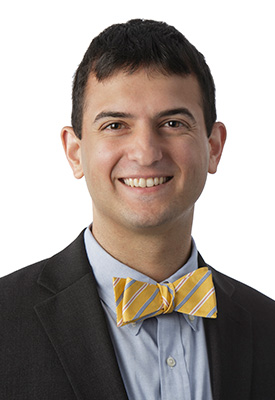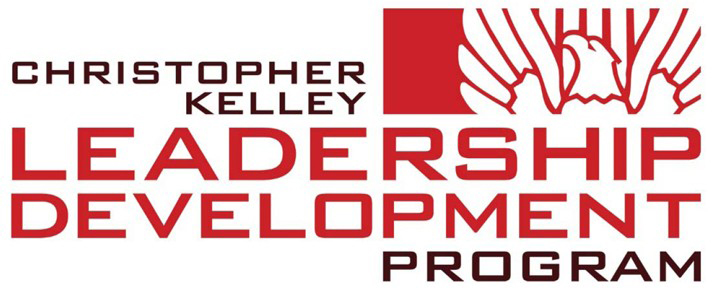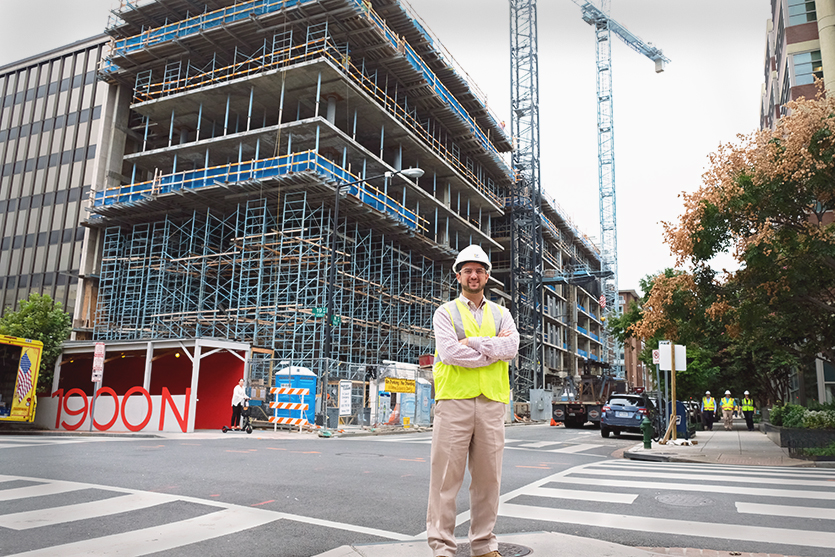FOX Architects was founded to develop talent in architecture and interior design. So we were delighted when Project Architect Frank D’Andrea was selected for the 2018-2019 class of the Christopher Kelley Leadership Development Program.
This highly selective program, administered through the DC chapter of the American Institute of Architects, leads 16 emerging professionals through a nine-month curriculum. Each participant leads a session on one of the topics: working together and collaboration, entrepreneurship and firm management, the art of negotiation, community engagement, closing the deal, industry trends, expanding the definition of practice, and the future of the field.
We’re excited to have Frank share his journey throughout the program, compiling what he learns in a blog post series called “Frank’s Field Notes.” To kick off the series, we sat down with Frank and chatted about the program, what drew him to architecture, and his professional goals as a leader in the field.
Why did you want to participate in the Christopher Kelley Leadership Development Program?
I’m involved in AIA DC’s Emerging Architects Committee, and that’s how I became aware of the program. It sounded like a great opportunity to push my career to the next level — a great resource for developing and rounding out my skills.
What are your career goals? How do you see the Christopher Kelley Leadership Development Program helping you achieve those goals?
I want to have a leadership position in the studio at FOX Architects, and the program is a way to work toward that goal. Being a leader takes time and experience, and there are many aspects of architectural practice and running a firm that you might not get exposed to on a day-to-day basis when you’re early in your career. The program helps fill in those gaps and provides the foundation for things I’ll need to use as my career develops.

When did you decide you wanted to be an architect?
In high school. I had this moment when I was playing Sim City. I was reading the manual on one of the expansion packs where you could design your own buildings and I thought it was really cool. I kind of stumbled upon the fact that you can actually do this for a living if you’re interested in it — I had this ‘aha moment’ and pursued architecture from there.
What drew you to architecture?
I’ve always been interested in how things go together — infrastructure, transportation, cities, urbanism — and I think that dovetails with what I said about Sim City. When I was growing up, I loved those books where it showed you how cities work, and Stephen Biesty’s Incredible Cross Sections, where they cut things away and showed you the internal workings of a submarine or a castle. I was always fascinated by that.
As a high school student, you had the unique experience of attending architecture camp. Tell me about that.
After I discovered that I wanted to be an architect, my mom found an architecture camp at Catholic University. I signed up and spent the summer doing this rudimentary crash course on architecture. We learned about architectural history and we were given design projects just like you would be given in a college studio course. It was basically, ‘Do you want to study this? Here’s what you will be doing.’ I absolutely ate it up. It was really cool.
Before I went to architecture camp, I thought maybe I wanted to be a meteorologist, and I went to meteorology camp at Penn State. So I have this history of going to specific camps for specific careers. Even though I enjoyed meteorology camp, it just wasn’t what I thought it was. It was way too much math!
What is the most fulfilling aspect of your job?
What I love most about my job is seeing things become real. I like being out in the field and dealing with those technical challenges — solving problems when something unexpected happens. It’s amazing seeing a building getting built and suddenly standing in something that was previously only an idea. And seeing the final product in the end — that’s just so satisfying.
Describe your dream project.
In some ways, I’m working on the dream project right now. 1900 N Street is amazing. It’s a beautiful building with an iconic red truss — people can go their entire lives without working on something like that. So in a sense, I’m already living the dream, but I’d really love to design an airport. An airport or a train station — some transportation-related building would be so cool. I still have those interests from when I was a kid, so combining those two things would be really fun. It’s more pieces to put together and problems to solve.

Which architect do you admire most, and why?
There are a couple. Renzo Piano — he’s absolutely amazing. He’s probably one of the few architects who’s not only an excellent designer, but is also excellent technically, and doesn’t have an ego. All around, I think he’s someone worthy of admiration because he embodies what a world-famous architect ought to be. He always seems affable and approachable. Not only are Piano’s buildings beautiful to look at, but all the details are well-conceived, and it’s hard to do that.
Eero Saarinen is another architect I admire. Like Piano, he designed beautiful, well-executed buildings, and he also designed my favorite building, which is Dulles International Airport. Every time I fly out of Dulles, I just pause and look around, even if I have a flight to catch and I’m running late. It’s just an incredible structure!
The program is built around preparing you to be a leading in the field. Are there any issues in the field that you’d like to improve?
I think diversity and inclusion is a big issue in society in general and is exacerbated in architecture. Architecture is a very homogeneous profession for a number of complex reasons. Education is expensive, and even if you get a scholarship, you have to pay for all the studio materials. It’s a profession where you have to pay your way. I think the profession has made strides, but I think we can do a lot better.
The other issue is sustainability. Although architects are at the fore of sustainability initiatives, there’s more we can do for the long-term sustainability of the built environment. The built environment has a huge impact on the overall sustainability of the planet, and we need to kick it up a couple of notches. We have to.
How might those issues be improved?
I don’t know, and that’s what I’m hoping to find out! These are such thorny problems.
For sustainability, it’s a cultural problem. Among architects, there’s an understanding that we need to do this. We understand how buildings operate. We understand how much energy they consume. The real challenge is convincing clients to prioritize sustainability. I think every architect wants to make their projects more sustainable, and I’m always disappointed when we lower the bar because it costs too much money. Architecture is client-based at its core, so if the client doesn’t want to do something, we have to work around that in some way. But we also need to advocate for sustainability in the public arena. DC has mandatory LEED requirements, so sustainability is baked into every major new building in DC. It’s great that we have some standards in place, but we don’t want to become complacent.

